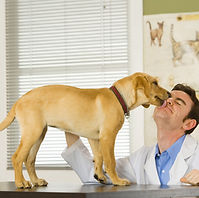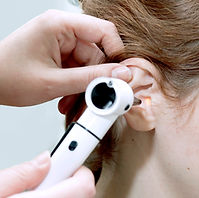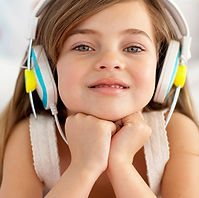

Sense of Smell: How Our Nose Knows
This lesson contains affiliate links to products I have used and personally recommend. At no cost to you, I make a commission for purchases made through the links or advertisements. These commissions help to pay for the costs of the site and enable it to remain free for anyone who wants to use it.
Objectives:
-
The students will be able to describe the parts of the nose.
-
The students will be able to describe how the nose and the brain work together.
-
The students will be able to explain how our nose helps protect us.
Question that encompasses the objective:
-
Think about something that smells really good.
-
Can you name anything that has a very good scent?
-
-
Now think about something that smells really bad.
-
Can you name anything that has a very bad scent?
-
Prepare the Learner: Activating Prior Knowledge
Warm up by asking students:
-
What do you know about your nose and your sense of smell?
-
Can you name any parts of the nose?
-
Are there any smells that bring back memories for you? (For example, when you smell fresh baked cookies do you think about Christmas?)
Common Core State Standards:
-
CCSS.ELA-LITERACY.SL.2.1
-
CCSS.ELA-LITERACY.SL.2.1 B
-
CCSS.ELA-LITERACY.SL.2.4
-
CCSS.ELA-LITERACY.W.2.2
-
CCSS.ELA-LITERACY.W.3.2
-
CCSS.ELA-LITERACY.W.3.2 B
-
CCSS.ELA-LITERACY.SL.3.1
-
CCSS.ELA-LITERACY.SL.3.4
Materials and Free Resources to Download for this Lesson:
-
“What’s That Smell?” scents:
-
Hand soap
-
Cinnamon
-
Coffee grinds
-
Rose petals
-
Vanilla extract
-
Garlic
-
Vinegar
-
Crayon shavings
-
Pencil shavings
-
Oil
-
Input:
What is the most important content in this lesson?
To reach the lesson’s objectives, the students need to understand:
-
The function of each part of the nose.
-
The connection between the nose and the brain.
-
The role the nose plays in protecting your from harmful/toxic smells.
How will the learning of this content be facilitated?
-
The lesson will start out with the students sitting at their desks. On the board, the teacher will draw two columns. One column will be labeled “Good Scents” and the other labeled “Bad Scents.” The teacher will have 10 pictures. 5 pictures will be of items that have a good scent and 5 will be of items that have a bad scent. The teacher will hold up each picture one by one and ask the students which column it belongs in. The teacher can either place the picture in the column themselves or invite the student who answers to do it. The demonstration should last for about 10 minutes.
-
**To keep the pictures on the board, you can either use tape or glue a magnet onto the back.**
-
The teacher will lead a class discussion about the activity, asking questions about what the students observed. Discuss the characteristics of the items that were good and the items that were bad. The teacher should ask the students how they know a scent is bad or good and what some of the characteristics of items with a bad or good scent are.
-
After the discussion, the teacher will hand out the labeled “Diagram of the Nose” worksheet. If it is possible, project the “Diagram of the Human Nose” onto the board using a projector or put into a PowerPoint document and project so that the teacher can point to the parts of the nose while they explain. Students should write the name of each part on the line of their unlabeled "Diagram of the Nose" worksheet, as it is explained. From this activity, the students will learn about the parts of the nose. Each part’s function will be explained.
Parts of the Nose and Their Functions:
-
Root: the upper part of the nose located between the eyes.
-
Bridge: the upper bony part of the nose.
-
Dorsum Nasi: the external part of the nose that is forward and upward.
-
Ala: the rounded part of the nose that is made up cartilage; this is the part that flairs out around the nostril.
-
Apex: the outermost, pointy part of the nose.
-
Philtrum: the vertical groove located in the middle of the upper lip.
-
**The following parts are not listed on the diagram, but it is a good idea to discuss these parts with the students. Make sure you write the names on the board because the students will need to copy those names onto their worksheet.**
-
Mucous Membrane: located inside your nose; moist, thin layer of tissue that helps to warm up the air and capture dirt and other particles that may get into your nose.
-
Olfactory Epithelium: located behind your nose; this is the area of your nose that helps your smell.
-
Cilia: nose hairs
-
[Information Source: http://kidshealth.org/en/kids/nose.html#]
-
-
Explain to the students that the nostrils are a very important part of the nose. When a scent enters your nose, the nose sends a message to your brain. Your brain then “translates”/ tells you what the scent is.
-
Familiar scents help us to have “flashbacks” because our sense of smell is the sense most linked to our memory.
-
Sometimes an item’s scent is so pungent (bad/horrible) that the brain sends a message to your body telling it to get rid of the scent. The body then tries to rid itself of the bad scent by vomiting.
-
-
After the diagram is explained, the students will break into groups of three. The students will work on an activity called “What’s That Smell?”. Each student will be given a “What’s That Smell?” observation worksheet. On desks around the room there will be cups with “mystery scents.” The groups need to go around to each desk, smell what is in the cup, and write on their observation worksheet what they think the item is. Allow the students to work for about 10-15 minutes. Reconvene and discuss the answers when the students are finished.
-
Cup 1: vanilla extract
-
Cup 2: cinnamon
-
Cup 3: garlic
-
Cup 4: vinegar
-
Cup 5: hand soap
-
Cup 6: rose petals
-
Cup 7: pencil shavings
-
Cup 8: coffee grinds
-
Cup 9: oil
-
Cup 10: crayon shavings
-
**To make the “mystery scent cups”, place an object inside a Styrofoam cup. Cover the cup with aluminum foil and poke a hole just big enough for the students to smell the item. You can also use containers with holes poked through the cover. Make sure that the students cannot see inside the cup or container.**
-
The final assessment will be for the students to work on the following:
-
Think about what we learned today in class. How would your life be different if you woke up tomorrow without a sense of smell? Write about three different scenarios where your lack of smell would affect your life. How would you accommodate not having this sense?
-
Here are some ideas for possible answers:
-
Our sense of smell is important because it can warn us of danger. If there is a fire somewhere in our house/building, our nose alerts us before we see it. If we had a weak sense of smell, we may not know there is a fire in our house/ building until it is too late.
-
If we could not smell, we would have to rely heavily on our other senses. Our sense of taste could help us with food items, our eyes could help us see what items could be harmful (i.e., chemicals/ loo at warnings).
-
-
If there is additional time, discuss any additional questions the students may have.
Time/Application
3-5 minutes
Guided Introduction
Review the agenda with the students:
-
Introductory Activity (“Good Scents vs. Bad Scents”)
-
Diagram of the Nose (with explanations of functions)
-
Group Activity: “What’s That Smell?”
-
Discussion of Group Activity
-
Independent Assessment
10 minutes
Introductory Activity
-
Have the students sit at their desks.
-
On a desk in the front of the classroom, have the “Good Scents vs. Bad Scents” pictures.
-
On the board, draw two columns. Label one column “Good Scents” and the other “Bad Scents”.
-
Show the students each picture and have them decide in which column the picture should go.
15 minutes
Diagram of the Nose
-
Give each student a “Diagram of the Nose” worksheet.
-
Project the diagram onto the board either through a projector or PowerPoint presentation.
-
Tell the students that as each part is explained, they should label it onto their worksheet.
-
Explain the connection between the nose and the brain, as well as how our sense of smell is most linked to memory.
15 minutes
Group Activity: "What's That Smell?"
-
Give each student a “What’s That Smell?” worksheet.
-
Instruct the students to break into groups of three.
-
Allow the students 15 minutes to travel around the room, smell the cups or containers, and write down what they think the smell/item is..
-
At the end of 15 minutes, have the students return to their desks and discuss their observations.
15 minutes
Independent Assessment:
-
Think about what we learned today in class. How would your life be different if you woke up tomorrow without a sense of smell? Write about three different scenarios where your lack of smell would affect your life. How would you accommodate not having this sense?
-
Here are some ideas for possible answers:
-
Our sense of smell is important because it can warn us of danger. If there is a fire somewhere in our house/building, our nose alerts us before we see it. If we had a weak sense of smell, we may not know there is a fire in our house/ building until it is too late.
-
If we could not smell, we would have to rely heavily on our other senses. Our sense of taste could help us with food items, our eyes could help us see what items could be harmful (i.e., chemicals/ loo at warnings).
-
-
If there is additional time, discuss any additional questions the students may have.
Individualized Instruction/Scaffolding
English Language Learners will be supported in this lesson through data-based heterogeneous grouping, verbal and written repetition of new vocabulary words, and multiple representation of vocabulary words through printed images and video.














